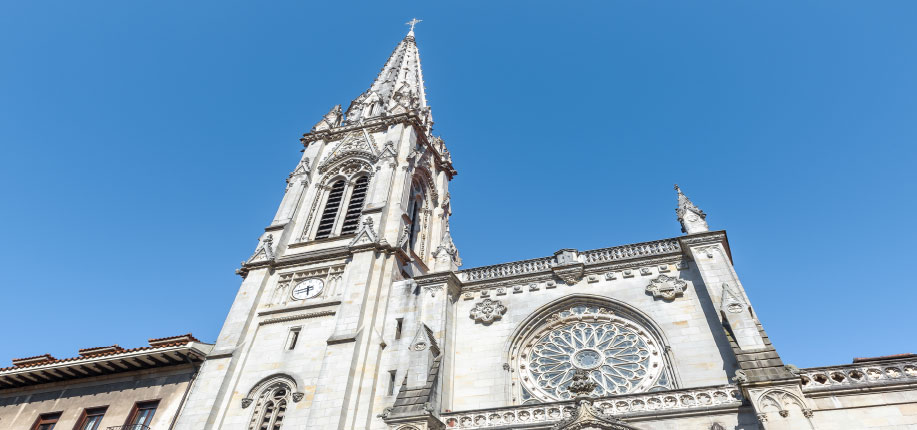About Bilbao

The Basque Country, an autonomous community within Spain, stands as a regional leader in renewable energies with a robust business and industrial landscape. Bilbao, the capital of Biscay province, serves as a modern hub for renewable energy, exemplified by the presence of both Iberdrola and Siemens Gamesa headquarters in the city.
Bilbao’s port has recently transformed into a Decarbonization Hub, displaying a firm commitment to hydrogen technology over the past two years. The port aspires to transform itself into a continental hub for hydrogen and synthetic fuel production and distribution, with a close partnership with our Main Exclusive Sponsor Petronor.
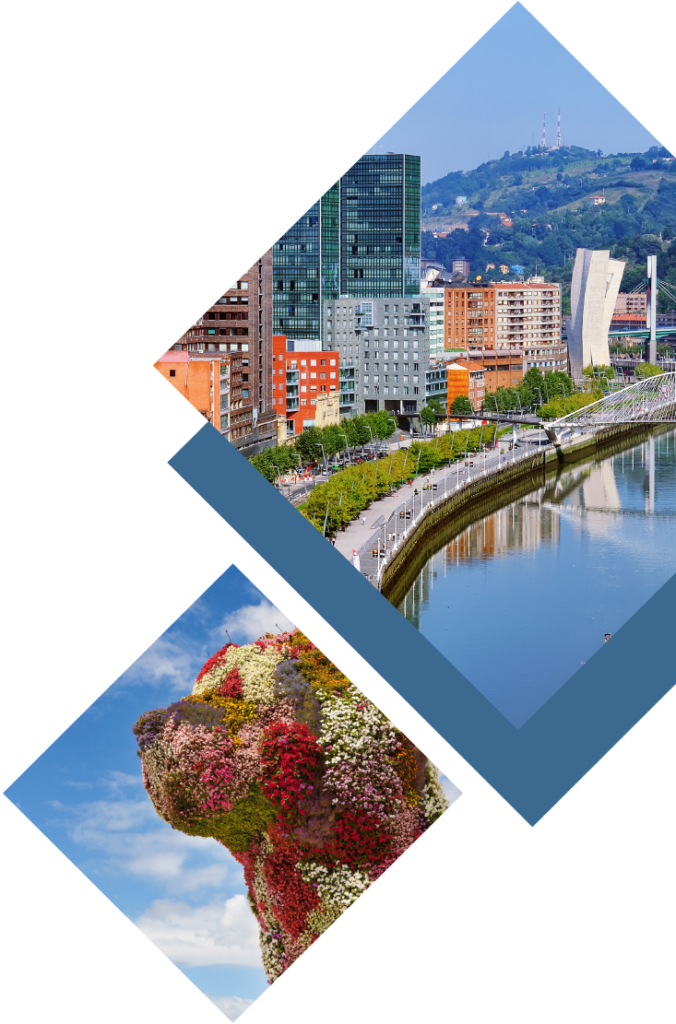
The Basque Country, an autonomous community within Spain, stands as a regional leader in renewable energies with a robust business and industrial landscape. Bilbao, the capital of Biscay province, serves as a modern hub for renewable energy, exemplified by the presence of both Iberdrola and Siemens Gamesa headquarters in the city.
Bilbao's port has recently transformed into a Decarbonization Hub, displaying a firm commitment to hydrogen technology over the past two years. The port aspires to transform itself into a continental hub for hydrogen and synthetic fuel production and distribution, with a close partnership with our Main Exclusive Sponsor Petronor.
Moreover, Petronor, a subsidiary of the Repsol group, is leading the development of the Basque Hydrogen Corridor (BH2C). Under the leadership of Petronor’s CEO José Ignacio Zudaire, this ambitious project represents a collaborative effort involving both public and private entities in the Basque Country.
The primary goal of the Basque Hydrogen Corridor Association (BH2C) is to promote hydrogen as a pivotal player in the energy sector. Its objective is to cultivate a thriving hydrogen ecosystem within the Basque Country, fostering projects and advancing the decarbonization of the economy. In general, the region is aiming to become a net-zero emissions zone by 2050 while preserving the economic importance of the Basque industrial sector. This sector plays a substantial role in the country’s Gross Domestic Product, particularly in industries such as steel, glass, and cement, which pose challenges in terms of decarbonization due to their substantial CO2 emissions.
The primary goal of the Basque Hydrogen Corridor Association (BH2C) is to promote hydrogen as a pivotal player in the energy sector. Its objective is to cultivate a thriving hydrogen ecosystem within the Basque Country, fostering projects and advancing the decarbonization of the economy. In general, the region is aiming to become a net-zero emissions zone by 2050 while preserving the economic importance of the Basque industrial sector. This sector plays a substantial role in the country’s Gross Domestic Product, particularly in industries such as steel, glass, and cement, which pose challenges in terms of decarbonization due to their substantial CO2 emissions.

BILBAO AT GLANCE
The Guggenheim Museum and its surroundings: The building was designed by Frank Gehry and has been described as one of the most spectacular constructions of this century. In addition, it is next to the Bilbao Estuary and in the surrounding area characteristic sculptures such as the «Puppy» or «Mummy» can be found.
The Guggenheim Museum and its surroundings: The building was designed by Frank Gehry and has been described as one of the most spectacular constructions of this century. In addition, it is next to the Bilbao Estuary and in the surrounding area characteristic sculptures such as the "Puppy" or "Mummy" can be found.
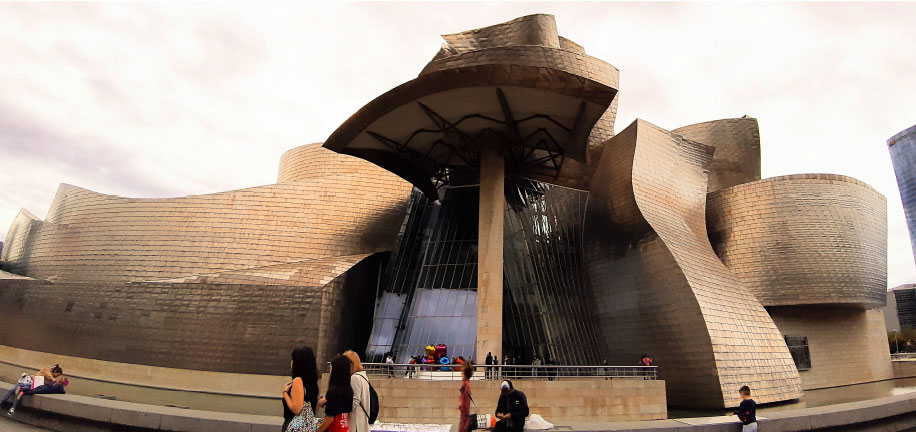
Zubizuri bridge: It was designed by the architect Santiago Calatrava and sought to promote the rebirth of an area of Bilbao after the decline of a fundamental industry for the city, the maritime industry. The layout of the bridge also sought, logically, to facilitate pedestrian communication between two sectors of the population.
Zubizuri bridge: It was designed by the architect Santiago Calatrava and sought to promote the rebirth of an area of Bilbao after the decline of a fundamental industry for the city, the maritime industry. The layout of the bridge also sought, logically, to facilitate pedestrian communication between two sectors of the population.
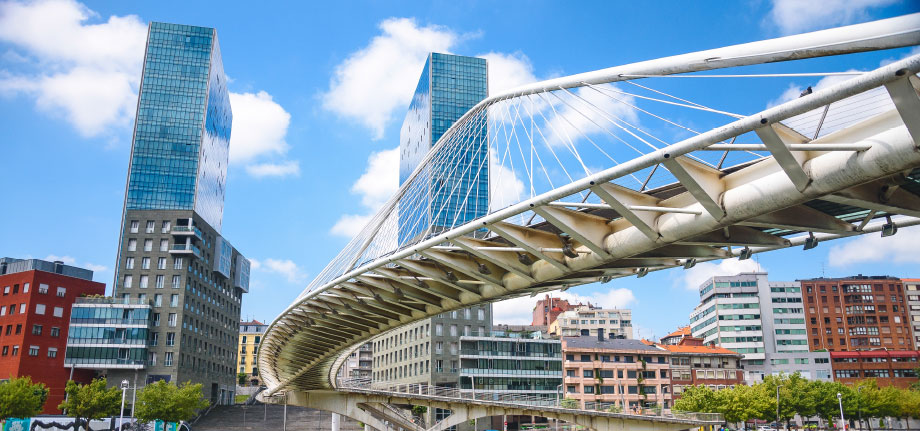
La Ribera Market: It was created in 1929 and is characterized by being the first. Today it is a commercial reference for the whole of Vizcaya. In 1990 it was recognized as the most complete Municipal Food Market by Guinness, being the largest that existed at that time in terms of the number of traders and stalls, as well as the largest covered market in Europe thanks to its 10,000 square meters.
La Ribera Market: It was created in 1929 and is characterized by being the first. Today it is a commercial reference for the whole of Vizcaya. In 1990 it was recognized as the most complete Municipal Food Market by Guinness, being the largest that existed at that time in terms of the number of traders and stalls, as well as the largest covered market in Europe thanks to its 10,000 square meters.
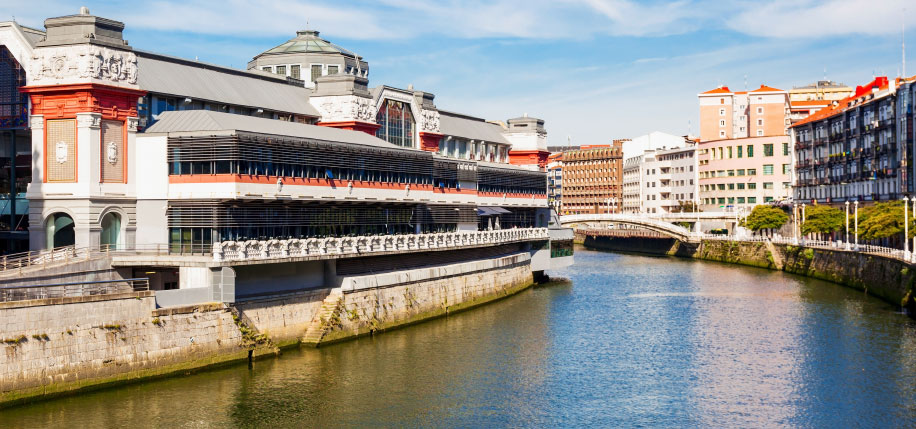
The old town of Bilbao: It is made up of cobbled and narrow pedestrianized streets with lots of charm. It is ideal for strolling around and enjoying the characteristic «pintxos» as part of Basque gastronomy.
The old town of Bilbao: It is made up of cobbled and narrow pedestrianized streets with lots of charm. It is ideal for strolling around and enjoying the characteristic "pintxos" as part of Basque gastronomy.
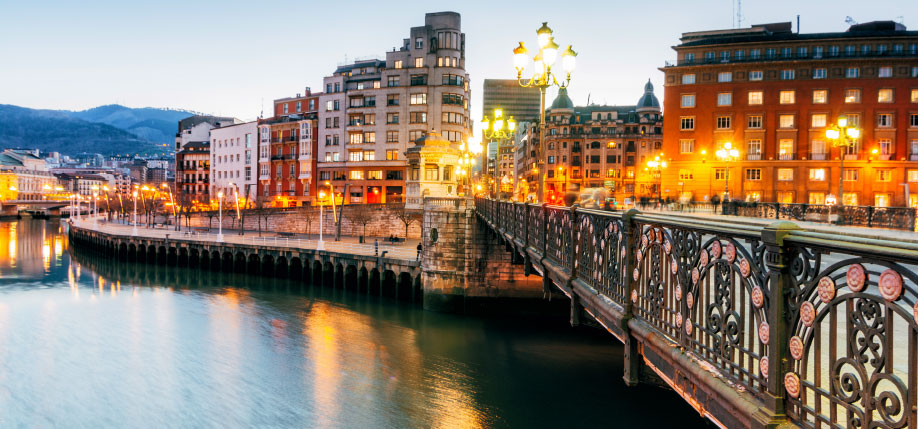
The Cathedral of Santiago in Bilbao: It is the most monumental Gothic church in Vizcaya and, apart from being a parish church, it has also been the seat of the Bilbao diocese since it was created half a century ago. The cathedral is in the very heart of the Old Town, the oldest quarter of Bilbao.
The Cathedral of Santiago in Bilbao: It is the most monumental Gothic church in Vizcaya and, apart from being a parish church, it has also been the seat of the Bilbao diocese since it was created half a century ago. The cathedral is in the very heart of the Old Town, the oldest quarter of Bilbao.
